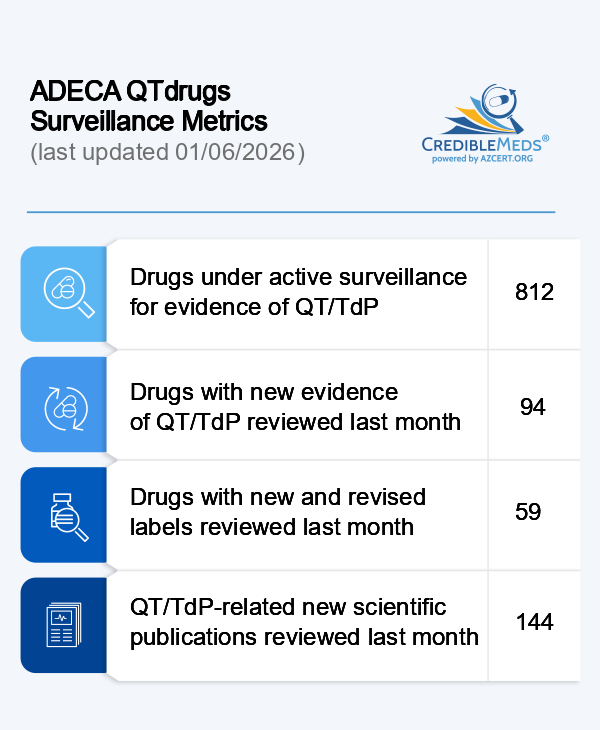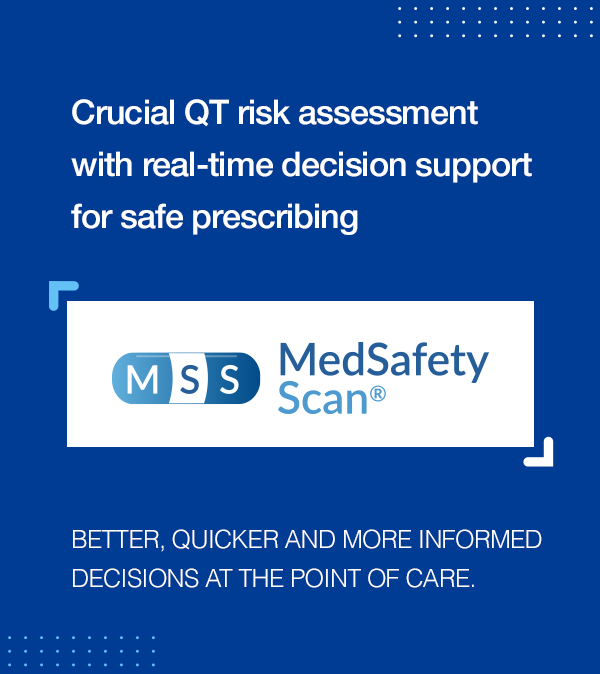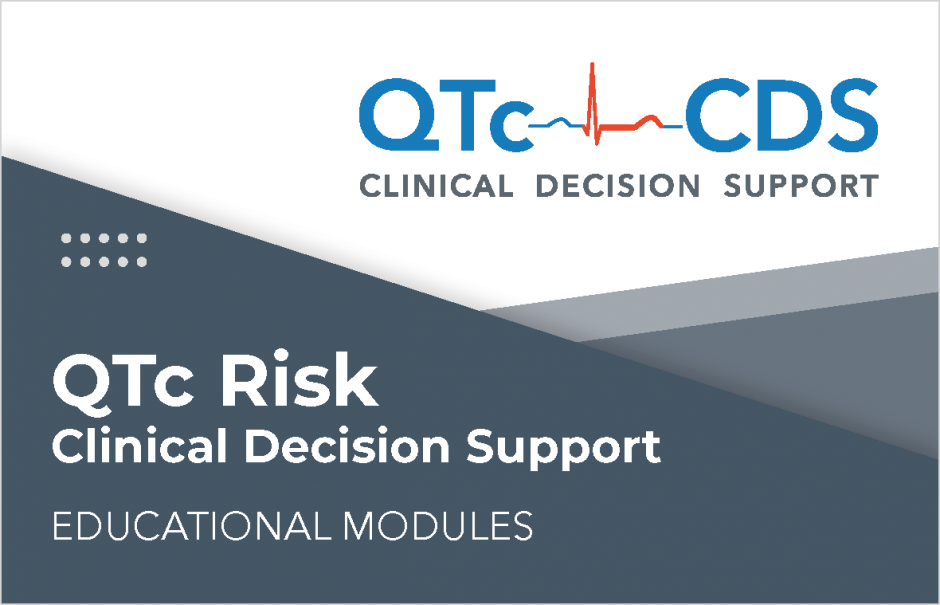REMINDER: The QTdrugs List includes three distinct risk categories for Torsades de Pointes (TdP) and QT prolongation but not all drugs in the List should be considered “QT prolonging”.

Because of the inherent complexity of drug-induced QT prolongation and the ensuing risk of developing TdP, AZCERT has sub-divided the QTdrugs List into three categories of risk of causing TdP.1 We want to remind those who wish to use the QTdrugs List in clinical decision making of the differences between these categories and caution that the QTdrugs List should not simply be thought of as a list of “QT-prolonging drugs”… it is not.



Drugs to Avoid in Congenital Long QT Syndrome

We hope this information is clarifying and we would be glad to answer any questions about how the QTdrugs list has been constructed and the definitions of its risk categories for QT/TdP. Contact us at info@azcert.org.
Raymond L. Woosley, MD, PhD and C. William Heise, MD, AZCERT











